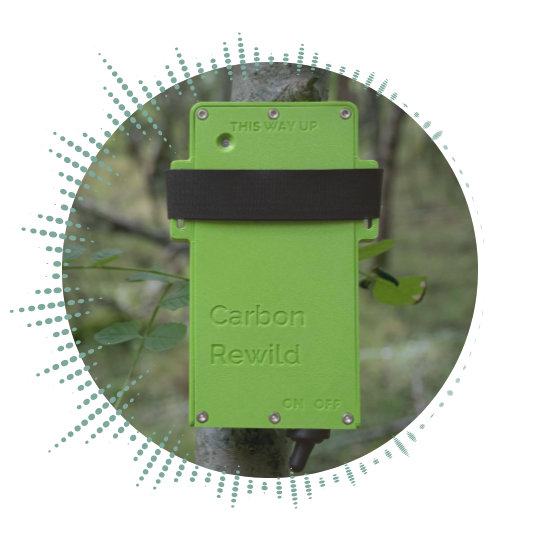Over recent years, as technology continues to evolve, scientists have utilized innovative methods to monitor and study biodiversity. One of these emerging technologies is Acoustic Monitoring, an exciting, non-invasive approach that offers a fresh perspective on understanding our natural world. This technique uses sound as a primary data source, primarily focusing on wildlife such as birds and bats, which are known for their distinct and identifiable vocalizations.
What is Acoustic Monitoring?
Acoustic monitoring involves capturing and analysing the sounds produced by animals in their natural habitats. This sound data can be gathered actively – with researchers present, or passively – where devices are left in place to record sounds over a period. Passive Acoustic Monitoring (PAM) allows for long-term, uninterrupted data collection, facilitating a comprehensive understanding of species’ behaviours, populations, and habitat use.
For birds and bats, which are vocal creatures, this type of monitoring has proven incredibly beneficial. The collected soundscapes provide rich, detailed insight into the bird and bat communities, offering a ‘soundscape snapshot’ of the biodiversity in a specific region.
There is evidence that acoustic monitoring could be used in the future to identify amphibians, mammals and insects. Marine acoustics is already an established fields to monitor ocean species.
The two terms can be interchanged, as they are often referring to the same practice. Specifically, Acoustic monitoring is a survey technique to monitor wildlife and the environment, normally using passive sound recorders. Bioacoustic monitoring involves the recording of animal vocalisations to allow species identification, and measure behaviour and abundance in the survey area.
Acoustic Monitoring for Birds
Birdsong is not only beautiful to the human ear; it also carries a wealth of information. Birds use their voices to communicate myriad messages, from claiming territories to courting mates, warning about predators, or signalling the change of seasons. By analysing these vocalizations, we can draw significant conclusions about bird populations, behaviours, and threats they may face.
Advancements in acoustic technology and sophisticated software now allow us to identify individual species based on their unique vocalizations. These ‘audio fingerprints’ form an invaluable part of bird population studies, migration tracking, and behavioural analysis.

Acoustic Monitoring for Bats
Bats, the only mammals capable of sustained flight, employ echolocation, a sophisticated biological sonar system, to navigate and forage in the darkness. These high-frequency calls, often beyond human hearing, can be captured using specialized ultrasonic detectors. Analyzing these sounds provides us insight into species identification, feeding behavior, and movement patterns.
Moreover, bats serve as essential bioindicators, with changes in bat populations often indicating broader ecosystem changes. Thus, acoustic monitoring of bats can alert us to environmental shifts, potential impacts of climate change, and the effectiveness of conservation efforts.

The Role of Passive Acoustic Monitoring in Biodiversity Monitoring
Passive Acoustic Monitoring has transformed the landscape of biodiversity monitoring. The non-intrusive nature of PAM allows us to study species and ecosystems without disturbing their natural behaviours, an invaluable asset in conservation biology.
PAM offers the ability to continuously monitor areas that may be difficult for researchers to access, such as dense forests, mountainous regions, or offshore locations. By placing sound recorders in these habitats, we can collect data 24/7, providing a detailed acoustic calendar of wildlife activity.
Furthermore, PAM promotes citizen science, where ordinary people, armed with increasingly affordable acoustic devices, can contribute to scientific data collection and conservation efforts. This democratization of science, facilitated by PAM, holds promising potential for the future of biodiversity monitoring.
In conclusion, acoustic monitoring, particularly Passive Acoustic Monitoring, has emerged as an invaluable tool for monitoring biodiversity, especially for vocal species like birds and bats. As we continue to refine this technology, it will undoubtedly provide us with more profound insights into our natural world, equipping us better to protect it. The rich tapestry of nature’s symphony is more than just a pleasing backdrop; it is a critical source of data, waiting to be decoded and appreciated.
Getting Started with Acoustic Monitoring
Acoustic monitoring is a cost effective and scalable approach to monitor diversity of various species groups. Cutting-edge recording equipment, which can remain outdoors or even underwater for extended periods of time, has transformed the field to enable usage in a variety of environments.
For an acoustic survey, acoustic monitoring are normally deployed in the field for weeks or months to capture soundscape data. Multiple devices can be used to identify spatial distribution and behaviour of species within a given survey site.
Once the recording devices are retrieved, soundscape data can be analysed using a combination of AI and human verification to identify species and produce robust data on biodiversity and environmental health.

What do we do?
At Carbon Rewild, we use cutting edge bioacoustic monitoring technology to monitor biodiversity, recording audio data that can be analysed to identify species that are present, primarily focussing on Birds and Bats. Our weather-proof equipment can be used across range of locations and environments for accurate results.
We help take all of the heavy lifting out of the process for you, providing easy to use recording units, analyse the audio recordings, and provide verification services to deliver results quickly and accurately.
Interested in monitoring or want to hear about our services? Please get in touch with us here, or select the link below to learn more.

